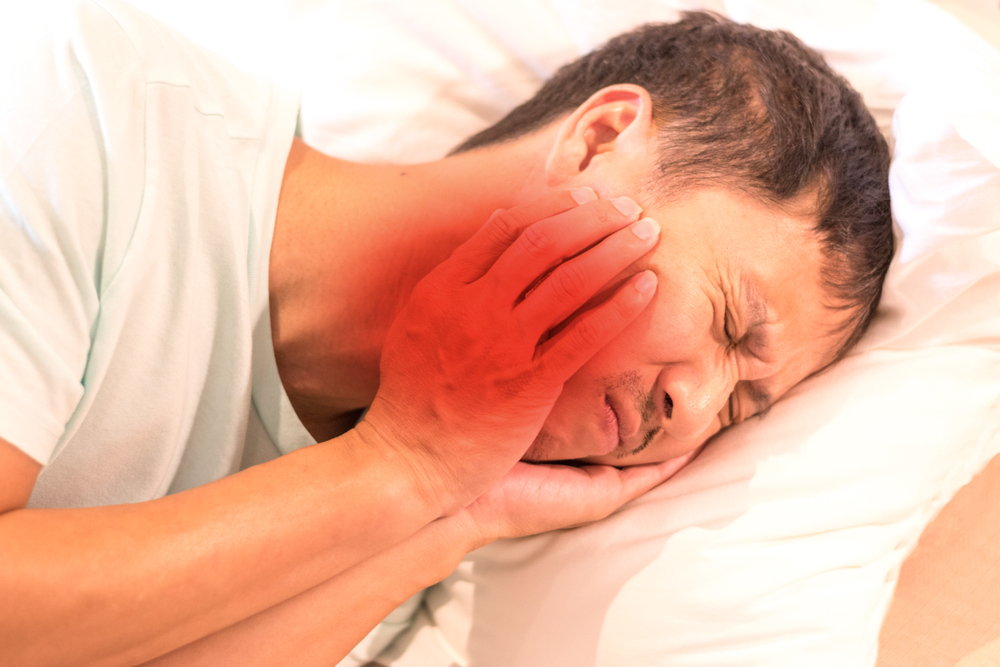Although nobody knows for sure, it’s estimated that TMD affects around 10 million Americans. Although some cases are mild and cause only mild discomfort, TMD can be severe. Severe cases of TMD can cause significant pain that lowers a person’s quality of life. If you or a loved one has TMD, there are things you can do to ease jaw pain related to the disorder.
What is TMD?
TMD is temporomandibular joint dysfunction. You may have heard it commonly called TMJ or TMJD. It’s a disorder affecting the temporomandibular joint, which is the joint responsible for opening and closing your jaw. This joint is formed where the mandible (jaw) connects with the temporal bone (part of the skull). The TMJ allows you to chew, talk, and yawn. It also plays a role in swallowing.
The temporomandibular joint is surrounded by many muscles that help connected bones provide their functions. As a result, people with TMD may have myofascial pain, joint pain, or a combination of the two. Although these two types of pain are often confused, they’re functionally different.
Myofascial pain happens in the muscles and can be felt in the jaw, at the temples, or anywhere along the side of the head. Some people have “referred” myofascial pain, meaning discomfort presents in an area away from the jaw. For example, referred pain may happen in the neck, shoulder, or arm. This type of pain may also feel like headaches, usually presenting on one side of the head.
On the other hand, joint pain will be felt only in the area surrounding the temporomandibular joint itself. Generally, it will be felt as an ache when you chew or yawn. However, it can also feel like a sharp, stabbing pain or a dull, pulsing discomfort. In severe TMD, joint pain may be felt even when you aren’t actively using your jaw.
What Can Cause TMD?
Many different factors can cause TMD. Some people are born with the condition due to birth defects in the temporomandibular joint itself. In these cases, people will present with symptoms from a young age. If you have fibromyalgia, having TMD as a co-occurring disorder is common. Other causes of TMD include:
• Stress
• Caffeine
• Teeth clenching
• Excessive gum chewing
• Braces
• Retainers
• Trauma
• Psychological factors
Avoid These Things if You Have TMD
Certain things can make TMD worse. If you have TMD or are presenting with pain-related symptoms, avoiding things that will make it worse can help provide relief. For example, people with TMD should avoid chewing gum or eating chewy foods like taffy and steak. You should also avoid taking large bites of food, which can stress the jaw joint. Instead, cut food into smaller bits that are easier to chew and go slow.
Elevated caffeine levels and stress can also make TMD pain worse. Limiting caffeine and learning healthy stress management techniques can help. You may consider trying yoga, meditation, journaling, or an artist outlet to help ease stress. Talk to your doctor if you’re prone to anxiety or panic attacks so they can help you effectively manage them, if necessary.
Ease Jaw Pain Related to TMD
Besides learning effective stress management techniques and avoiding the things mentioned above, you can do a few other things to help ease jaw pain related to TMD. These include:
• Physical therapy
• Manual therapy (joint mobilization and massage)
• Rocabado 6×6
• Posture Training
• Cardiovascular endurance for endorphins
• Mouthguard
• Medications
There is Help For Those Living With TMD
Although TMD can be painful and limit certain activities, there is hope. Avoiding things that make the pain worse can help. Then, you can work with your doctor or dentist to find a treatment plan that works best for you.



